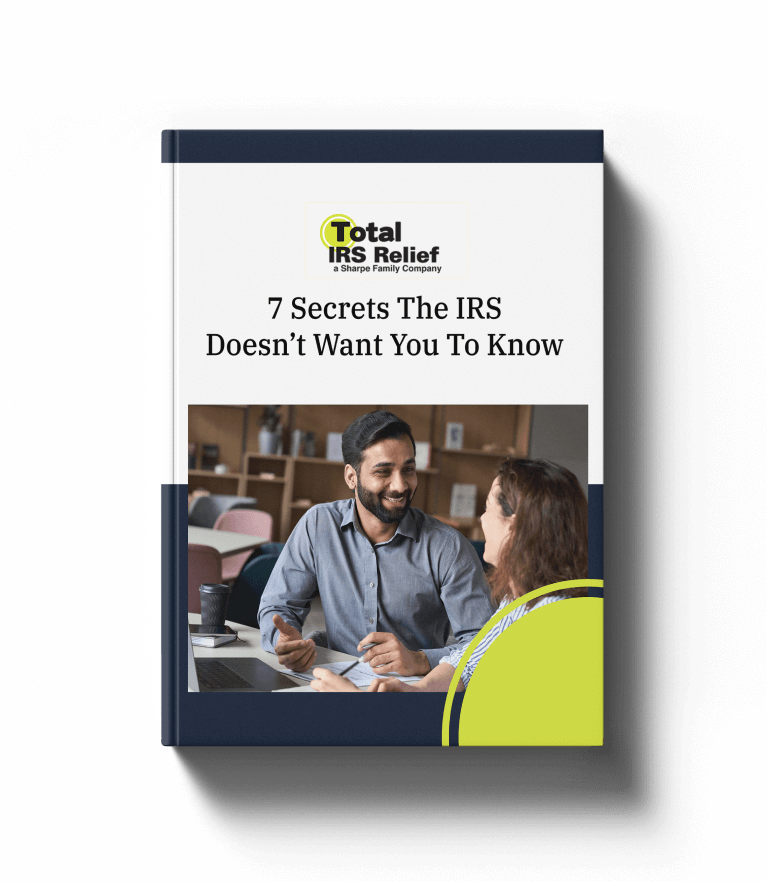
When the IRS places a bank levy on your account, it’s not just paperwork — it’s real money vanishing. And if you’re reading this because it just happened to you, take a deep breath. You’re not the first person to face this, and with the right help, you won’t be the last to overcome it.
At Total IRS Relief, we’ve helped countless individuals and business owners recover from surprise levies, negotiate with the IRS, and regain their financial footing. This in-depth guide is meant to give you clarity in a moment of chaos, walking you through how levies work in 2025, what steps to take immediately, and how to protect yourself going forward.
What Is an IRS Bank Levy — and Why Does It Happen?
A bank levy is the IRS’s legal way of saying, “We’ve asked. Now we’re taking.” It’s a seizure, not a warning. The government can legally freeze the funds in your checking or savings account, and then withdraw those funds to pay your tax debt.
Bank levies happen after a long series of ignored notices and missed opportunities. But here’s the kicker: sometimes people never see those notices due to old addresses, filing errors, or misunderstandings. In 2025, this is happening more than ever due to enhanced IRS automation and enforcement.
The IRS Levy Timeline (What Actually Happens)
1. Tax Debt Is Assessed
The IRS reviews your tax filings and determines you owe back taxes — possibly from past returns, unfiled years, or audit adjustments.
2. Notice and Demand for Payment Is Sent
This is the official IRS bill. If unpaid, it starts the clock.
3. Final Notice of Intent to Levy (LT11 or Letter 1058)
This is the letter to watch for. It’s your last chance to stop the process. After this, you have 30 days to request a hearing or pay.
4. No Action Taken? The IRS Contacts Your Bank
Once the levy is issued, your bank is required by law to freeze your account for 21 days.
5. On Day 22 — the IRS Takes the Funds
Unless the levy is released during the 21-day window, the money is gone.
What a Bank Levy Looks Like (In Real Life)
People often don’t realize they’ve been levied until:
A card gets declined at checkout.
Automatic payments bounce.
The bank calls to inform you your funds are frozen.
You try to log in and see a zero balance.
One of our clients at Total IRS Relief, a single mother of two, found out about her levy when her landlord called about a bounced rent check. She’d been trying to make monthly payments to the IRS, but a technical issue caused her plan to default. The result? Over $6,000 vanished from her account overnight.
Can You Get the Money Back?
Yes — but only if you act quickly. That 21-day holding period is your best shot at saving your funds. After that, the money is transferred and incredibly difficult to recover.
Your options:
Request a Levy Release: If the IRS made a mistake or didn’t follow procedure, you can request a reversal.
Claim Economic Hardship: Prove that taking the funds would cause serious financial harm — this can lead to temporary protection.
Set Up a Payment Plan or Offer in Compromise: The IRS may agree to lift the levy if a viable resolution is in place.
Show the Debt Isn’t Yours: This applies in cases of identity theft, spouse fraud, or IRS error.
Why the IRS Hits You with a Bank Levy
There are many reasons the IRS escalates to levies:
You ignored or missed IRS mail.
You didn’t file taxes for multiple years.
You were in a payment plan, but missed a payment.
You didn’t qualify for relief but didn’t explore other options.
The IRS believes you’re intentionally avoiding payment.
In 2025, these judgments are being made by algorithms in many cases. IRS agents have more tech and data at their disposal than ever before. This means taxpayers who’ve never had issues are getting caught in the crosshairs.
What Not to Do When Facing a Levy
It’s easy to panic — but some reactions will only make things worse. Here’s what not to do:
Don’t withdraw all your funds after the final notice. It could be seen as avoidance or evasion.
Don’t ignore it. The problem won’t go away, and once the money is gone, it’s almost impossible to get back.
Don’t assume it’s too late. You may still have powerful options, especially within the 21-day window.
Don’t talk to the IRS without knowing your rights. Saying the wrong thing can limit your options.
Your Best Move: Get Help Right Away
At Total IRS Relief, we specialize in stopping aggressive IRS collections and reversing levies — fast. Time is the most critical factor, and our team moves quickly on your behalf.
Here’s how we help:
✅ Immediate Case Review
We analyze your IRS records, notices, and account transcripts to understand the full scope of your situation.
✅ Stop the Bleeding
We contact the IRS and your bank to freeze further action — often within 24–48 hours of taking your case.
✅ Negotiate the Best Resolution
Whether it’s an Installment Agreement, Offer in Compromise, or Hardship status, we fight for a solution that works for you.
✅ Long-Term Protection
Once the crisis is over, we help you fix the underlying issue: filing old returns, settling penalties, or fixing compliance errors so you’re not at risk again.
What Makes Total IRS Relief Different?
There are a lot of companies claiming to help with tax problems, but not all deliver.
Here’s what sets us apart:
Real people. Real results. You speak directly with experienced tax professionals, not call center agents.
Nationwide service. We’ve worked with taxpayers in all 50 states.
Personalized strategy. No cookie-cutter plans — we create a roadmap based on your tax history and financial reality.
Emergency handling. We prioritize levy and garnishment cases because we understand the urgency.
What If You’re a Business Owner?
Levies don’t just hit personal accounts. If you’re a business owner, you could face:
Payroll account freezes
Vendor check seizures
Loss of operating funds
Customer payment garnishment
The impact can be catastrophic — but it doesn’t have to be permanent. We’ve helped businesses keep their doors open and get back on track with structured tax debt plans that avoid future levies.
2025: A Year of IRS Aggression
Thanks to funding increases under the Inflation Reduction Act and expanded IRS tech, enforcement in 2025 is at an all-time high.
More people are being levied than in previous years — not just high earners, but gig workers, retirees, and small business owners too. The IRS is leveraging AI to flag cases, reduce response times, and issue automated levies.
If you’re dealing with the IRS now, you are not alone — and it’s more important than ever to have a team that knows how to deal with this new, faster-moving version of the agency.
What to Do Right Now (Step-by-Step)
Check for IRS notices. Locate your Final Notice of Intent to Levy and confirm the date.
Call your bank. Ask if a freeze has been placed and how much is affected.
Contact Total IRS Relief. We’ll review your case for free and explain your options.
Avoid using levied funds. Do not attempt to transfer or withdraw them — this can backfire.
Gather documents. Past tax returns, notices, bank statements, and income documentation will be crucial for resolution.
Final Thoughts: It’s Not Over
A levy feels like financial disaster. But it’s not a death sentence.
In many cases, IRS bank levies are preventable — and reversible — if you act quickly and strategically. Even if you think it’s too late, there may be legal and procedural tools we can use to intervene.
At Total IRS Relief, we’re not here to judge — we’re here to help. Whether you owe $15,000 or $150,000, we’re ready to fight for the most favorable outcome possible.
Call us today to schedule a confidential consultation, and let’s take the first step to reclaiming your account, your confidence, and your peace of mind.
Enter your contact information to schedule your FREE one-on-one consultation. Our tax experts will get back to you as soon as possible.

